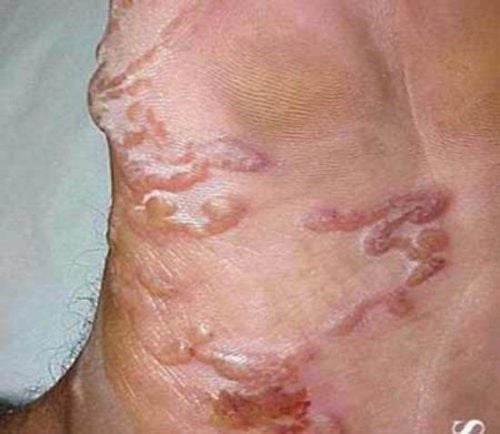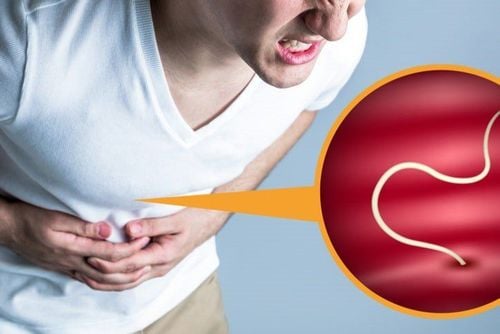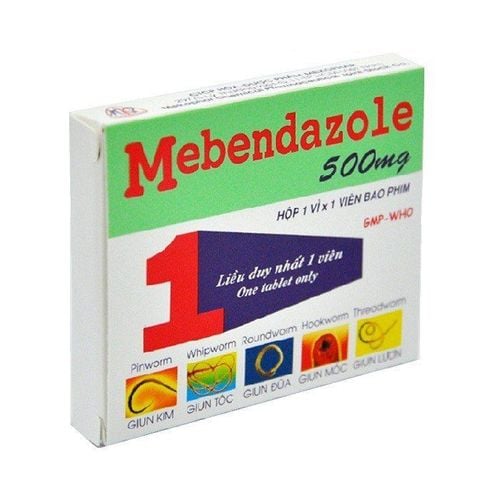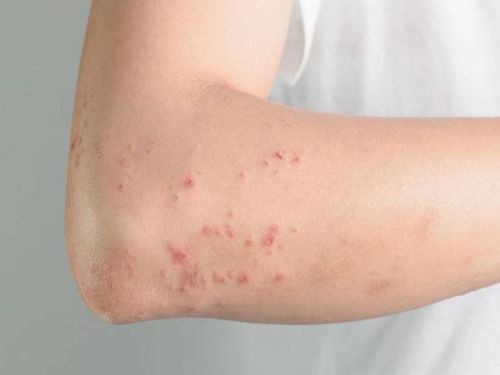This is an automatically translated article.
Parasitic infections always have a great impact on quality of life, in which strongyloidiasis is the most dangerous parasite among gastrointestinal parasites because it has the characteristic of long-lived in the gastrointestinal tract. body and cause many dangerous complications, even life-threatening.
1. Is strongyloidiasis dangerous?
Strongyloides are parasites that enter the body through the skin, then move down to the intestines to parasitize in the digestive tract. The size of strongyloides is very small, only a few tens of micrometers to millimeters, can survive for a long time on human hosts, and in soil. When people come into contact with soil containing strongyloidiasis larvae, the larvae will pass through the skin into the bloodstream, respiratory tract, digestive tract, etc., then proliferate and move everywhere in the body, carrying it with them. Countless germs enter the organs they pass through. It is estimated that the life cycle of adult strongyloides can be as long as 5 years.
According to doctors, all other helminths such as roundworms, hookworms ... are not as dangerous as strongyloides because:
The size of strongyloides is too small, not visible to the naked eye like helminths. is different. Strongyloides do not need to go to the outside environment to still form a cycle of growth and development in the patient's body. Existing for a long time in the body, directly affecting the organs that they move through such as the skin, digestive system, lungs, esophagus, lymph nodes... The disease is difficult to determine, without clinical symptoms. obvious, easily confused with other diseases.

Giun lươn là một loài giun rất nguy hiểm
2. Complications caused by strongyloidiasis
Strongyloides cause damage to the intestines, stomach, duodenum and possibly the small intestine and colon, causing dangerous complications such as:
Decreased absorption, edema. Blood infection, febrile infection. Pneumonia. CKD . Meningitis, brain abscess. Gastrointestinal disorders Peptic ulcer disease. Even bacteria that pass through the intestines into the bloodstream can be life-threatening.
3. Is strongyloidiasis transmitted from person to person?
Currently, the rate of strongyloidiasis infection and reinfection is quite high, accounting for 1-2% of the population. Anyone can be infected with strongyloidiasis, however high-risk groups include:
People taking immunosuppressive drugs, especially corticosteroids. Malnutrition, alcoholism. Diabetes, organ transplant. Blood malignancy. Decreased blood Gammaglobulin. Hyperuremia - HTLV-1 infection Currently, strongyloidiasis has the main mode of transmission is through the skin and mucous membranes. With this form of infection, the development cycle of strongyloides in the human body is similar to hookworms or beakworms. However, strongyloides also have another unusual route of transmission, the retrograde cycle. Specifically, under certain conditions, strongyloidiasis larvae will stick around the anus and develop into larvae with a cylindrical esophagus, causing self-infection for the patient.

Người nghiện rượu tăng nguy cơ bị giun lươn
4. Symptoms
Strongyloidiasis is often difficult to identify, many cases of strongyloidiasis have no obvious clinical symptoms, easily confused with other diseases such as stomach ulcers, duodenal ulcers, asthenia...Y World literature records that 80% of patients infected with strongyloidiasis die, mainly because of wrong treatment.
The clinical symptoms are not specific but there are some suggestive symptoms such as:
Strongyloidiasis is often diffuse in patients being treated for another disease causing immunosuppression (eg, prolonged corticosteroid use. ). Manifested by abdominal distention, neurological and pulmonary complications, sepsis, can lead to death. The patient has long-term cirrhosis. Possible pulmonary symptoms (including Loeffler syndrome, persistent cough, diffuse pneumonia, respiratory failure) Symptoms of severe worm infection: Abdominal pain, severe diarrhea, gastrointestinal disturbances, bronchitis , paralytic ileus. Skin lesions (itching, itchy papules, skin edema, urticaria in the buttocks and waist...) Anemia, blood bruises appear. Slight weight loss. To definitively diagnose strongyloidiasis, patients can perform stool tests, serologic tests, endoscopy, PCR molecular diagnostics, etc. to get the most accurate results, thereby planning treatment. effective.

Sụt cân là một dấu hiệu của bị nhiễm giun lươn
5. Prevention
Currently, Vietnam is a country located in the endemic area of strongyloidiasis, concentrated in southern provinces such as Long An, Binh Duong and some provinces in the Central Highlands. Because the infection route of strongyloidiasis is mainly through the skin and in contact with the soil and larvae, strongyloidiasis is common in people who often come into contact with the soil such as farming, gardening, planting trees, having a habit of walking or walking. ceiling...
To actively prevent strongyloidiasis, people should pay attention to:
Sanitize the surrounding environment. Actively deworm every 6 months or 1 year. People who come into contact with soil should wear gloves and boots. Strengthen the body's resistance, avoid diseases that cause immunodeficiency. Avoid eating raw food. Sanitize and wash your hands before and after eating.
Please dial HOTLINE for more information or register for an appointment HERE. Download MyVinmec app to make appointments faster and to manage your bookings easily.













